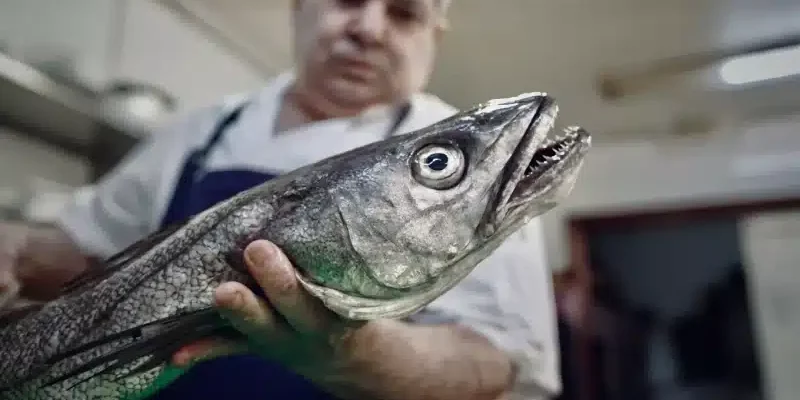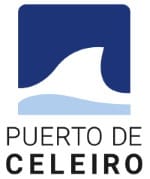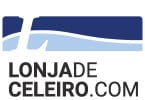
Is hake’s remarkable recovery in the Atlantic a sign of hope for our oceans?
The hake population in the waters of Northwestern Europe has recovered spectacularly over the past 20 years. What’s behind this remarkable rebound and how might this success story be repeated elsewhere?
You would be forgiven for assuming that the secluded fishing villages of Galicia in northern Spain are not a hive of activity at 02:00 am, but you would be wrong.
Boasting over 1,600 kilometres of coastline, this autonomous region is renowned for its fish dishes. Dock workers here at the Port of Celeiro work throughout the night, unloading shipments of fresh catch before transporting them to busting markets nearby.
Thanks to its privileged geographical position in the northwestern corner of Spain, Galicia provides unparalleled access to the Atlantic Ocean and is a seafood lover’s paradise.
With its flakey texture, the mild-tasting hake is a staple in Galician cuisine and the backbone of the local economy.
“This fish is incredibly versatile – you can prepare it in almost any way you can think of,” said Domingo Alló Puñal, a chef who prides himself on bringing the best of Celeiro’s marketplace crustaceans and fish to the table at Boa Vista restaurant.
“If the hake fishery closed down, we would all be out of work. We all depend on hake,” confessed José Luis Fernández Louzao, a local chief mate.
However, Galicia has faced this problem before. Not so long ago, this all-important species almost disappeared from the Atlantic Ocean, only for stocks to rebound later, stronger than ever.
Marine scientist Javier López, who leads the sustainable fisheries campaign at the conservation advocacy organisation Oceana told Euronews about the detrimental effects overfishing in the 1980s and 90s had on the commercial market years later.
“Atlantic hake numbers dropped dramatically due to decades of overfishing. The population was so low that the species was on the brink of collapse. That was alarming not just for the environment, for the fish population, but also for the people concerned.
“Many fishermen and coastal communities relying on hake would have struggled to sustain their activity,” he explained.
Fast forward to the present day, North-East Atlantic hake has been recognised for its sustainability, quality and traceability. Thanks to selective fishing gear, damage to hake populations in these waters has been minimised which helps to keep stocks at a healthy level.
Have your hake and eat it too
So how do hake fisheries sustain stocks while keeping up with the local demand? The answer lies in timely conservation measures and a bit of luck.
European hake is widely distributed over the shelf of the North-East Atlantic Ocean, in the 1990s overfishing reduced numbers to well below sustainable levels. Scientists who observed the decline raised the alarm and warned that northern hake could vanish.
In response, the European Union took decisive steps in the early 2000s. They established strict catch limits based on scientific advice, increased the size of fishing net meshes to allow young hake to escape, and created two large protected areas for the little ones to grow. Fortunately, sea conditions were favourable, which also played a big role.
These efforts paid off: the northern hake population surged to unprecedented levels. This rebound allowed for a gradual increase in catch quotas so that hake could be fished sustainably.
The same method could be applied to other species in decline. López explained that the key is to set concrete long-term recovery goals, enforce measures and stick to them.
Are European waters still overfished?
Fishing has decreased significantly in the Mediterranean Sea, Black Sea and Northeast Atlantic regions over the past two decades. However, it is still well above sustainable levels in the Mediterranean and Black Sea regions.
The graph below shows fishing pressure (FMSY) in these regions since 2003. Values below 1 indicate sustainable fishing levels.
FMSY is the ratio between actual fishing mortality (F) and fishing mortality at maximum sustainable yield (MSY).

“Reaching this level of recovery and currently having an abundance of northern hake in the Atlantic isn’t an accident. It’s the result of careful management, control measures and favourable ocean conditions. But credit must also go to the fishing sector which has endured these measures,” explained López.
Local fishermen face many challenges in the current climate – from low market prices to stiff competition from cheap imports. However, current stock numbers are helping the community reclaim Celeiro’s reputation.
“There were a few years when fishing decreased quite a bit. Let me give you an example, before we used to catch 4,000 kilos a day, now we catch 1,000 kilos a day. Europe lowered the catches and then increased them. Now the fish population is good, we’re fishing very well,” said José Novo Rodríguez, the CEO of Celeiro’s port.
While Atlantic hake numbers have recovered, Mediterranean stocks are in a precarious state.
Mediterranean hake’s slow recovery
A recent European Commission report showedthat Mediterranean hake numbers would need to increase more than tenfold to reach sustainability.
Beatriz Guijarro, who leads fishery stock assessments for COB-IEO CSIC, the Spanish Institute for Oceanography, said that hake populations have been “sustained unsustainably” off the coast of the Balearics because the underwater terrain has helped some hake evade trawlers, enabling their survival.
“Hake is overexploited, but according to our data, it’s not at risk of collapse. A crucial part of the population, the large females, live in areas typically unreachable for trawlers. This helps maintain the population over the years, despite ongoing overexploitation,” she told Euronews.
The Mediterranean is diverse and complex, making hake recovery a long-term challenge. Area closures, the use of more selective gear and efforts to regulate the number of fishing days were enforced here with a significant delay – 20 years after the measures in the Atlantic – so it’s still too early to assess the outcomes.
Can these methods be used to replenish other marine species?
At the port of Alcúdia in northern Mallorca, Joan Jesús Vaquero Enseñat, the captain of a bottom trawler, told Euronews that the fishing sector resisted the restrictions at first but admitted the measures are justified today, even though he is limited to fishing just four days a week.
According to data released by the United Nations Food and Agriculture Organisation in 2023, the dangers of overfishing European hake in the Mediterranean have been reduced by 39 per cent under current management plans.
While Mediterranean hake numbers are now slowly rising, Javier López warned that the species remains vulnerable and numbers could still drop. But, with the right measures in place, there is a strong chance for recovery.
“The main lesson here is that we shouldn’t wait for a crisis before we act. Taking early action avoids more complex problems and socio-economic repercussions.
“The sea is generous; with the right measures in place, resources could be replenished. There are limits we must not cross, but if we act wisely, we can be confident that the fish will return,” concluded López.




This Post Has 0 Comments